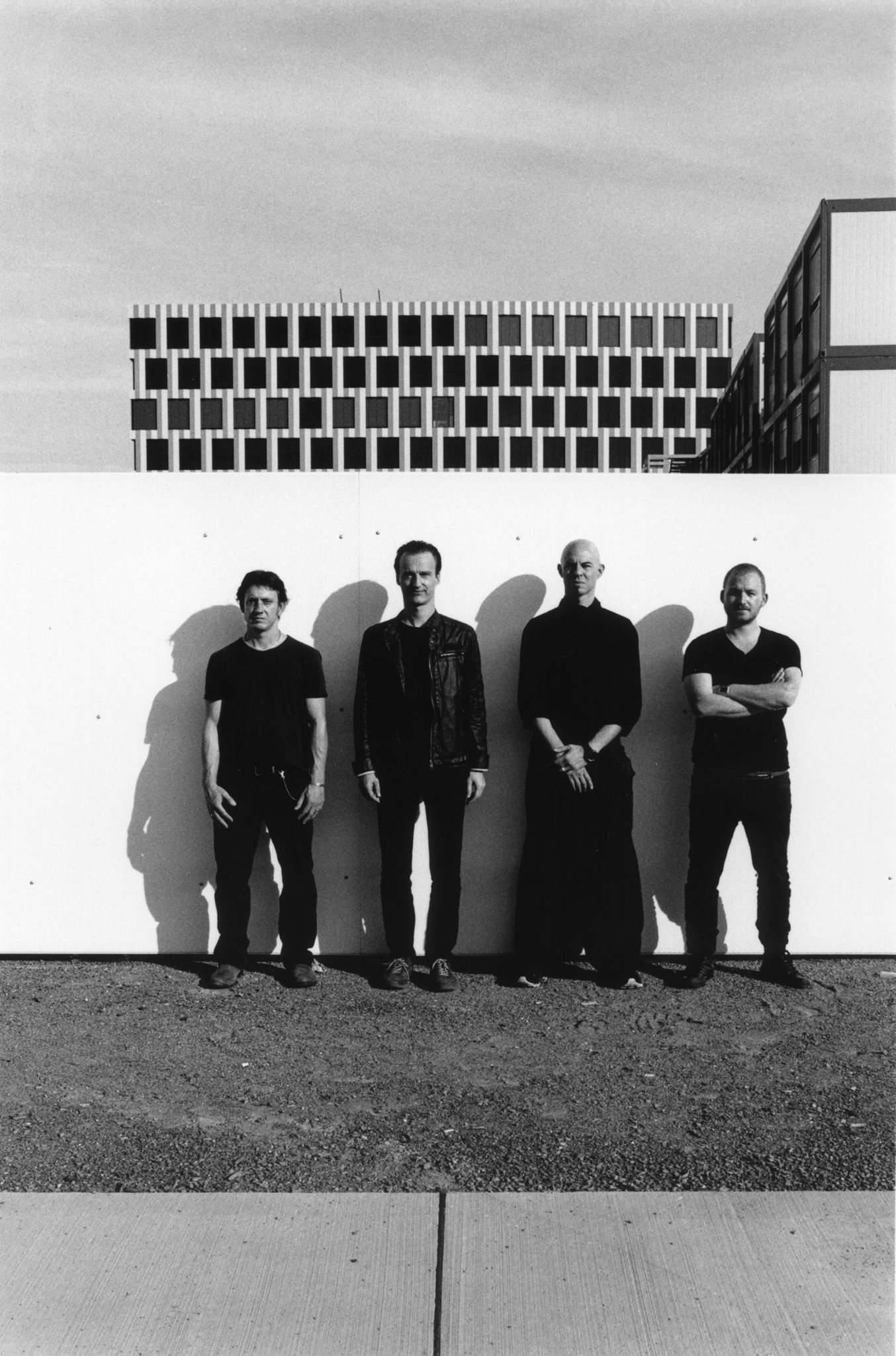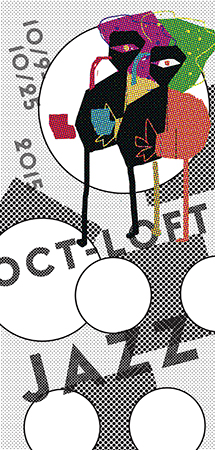Nik Bärtsch之“浪人”
Nik Bärtsch’s RONIN
瑞士 Switzerland
时间 Time
2015.10.19 20:00 – 21:30
场地 Venue
华侨城创意文化园北区B10现场 B10 Live, North District of OCT-LOFT
演出者 Artists
Nik Bärtsch – 钢琴 Piano / 电钢琴 Fender Rhodes / 作曲 Composition
Sha – 中音萨克斯 Alto Sax / 低音单簧管 Bass Clarinet
Kaspar Rast – 鼓 Drums
Thomy Jordi – 贝斯 Bass
Nik Bärtsch
“相比大众嚷嚷着追求的那种速食杂糅歌曲,Bärtsch的神秘音乐将具有更加持久的生命力。”
——Stuart Nicholson,《观察者报》(英国)
“随着乐队阵容的扩大,Bärtsch的声音模块变得更为厚重饱满。乐队在Feuerwache[1]发出的声响,又一次震撼人心、清脆有力:合奏部分呈现出了一种连古典音乐界的经典老牌交响乐团——苏黎世的The Tonhalle Orchestra[2]都难以做得更好的精确。”
——《曼海姆晨报》(德国)
“如果Muscle Shoals声音工作室[3]在搬去瑞士之前在纽约稍作停留,和Steve Reich(极简派作曲家)一起玩玩音乐,他们可能会做出像RONIN Rhythm Clan这样的东西,但他们还是会欠缺了Bärtsch的特色——他用严谨的手法,看似在创作里发展出了一个单一的概念,事实上却以其实实在在的无穷潜力,创造了一个更为辽阔的声音世界。他们在此次2013 Enjoy Jazz音乐节上的演出证明了这一点。”
——All About Jazz网站(美国)
作为乐队的作曲家,Nik Bärtsch确实在纸上记录下了大部分他的创作乐符,但在现场演出里,你却会发现,在某些情况下是不可能分辨出哪些部分是遵循编曲的,哪些是重新演绎或即兴演奏的。乐队需要在一瞬间即兴,为一首乐曲寻找到适当的张力和戏剧性的架构。因此,乐队不仅在作曲上胜人一筹,其出彩之处更在于本身成员间的有机反应。这也使得“浪人(RONIN)”能够用克制而激烈、无法被音符制约的方式演奏,而这只能通过不断的排练和持久的耐心,对彼此的尊重和兴趣,以及产生共鸣的能力中衍生出来。而后,那些行云流水的乐句、引人入胜的生动跳转、幽灵音(ghost notes)织就的天罗地网和韵律十足的灵光妙笔,便都自然呈现了。
他们的音乐吸收了许多截然不同的元素,比如放克、新古典,又或是日本宗教音乐中的声音。尽管受到众多不同风格的影响,“浪人”的音乐始终都绽放出强烈的个性。
然而,他们使用的这些形式,绝不仅仅是追捧后现代风潮的生硬拼凑,而是嵌合成了一种紧凑连贯的全新风格。最终,这些声音和节奏都变得别具一格,打上了他们的鲜明烙印——看似漫不经心地,以新颖的手法将极少的乐句不断建构组合、层层堆叠。于是,“浪人”在所有层面的音乐表达方式上创造了一致的美学。在他们的手里,作曲、乐句划分、声音架构、演出和音乐形式,一起构成了由相关元素组合而成的系统。 (Michel Mettler)
被认为是远离了爵士风格的他们,在德国著名现代爵士厂牌ECM旗下推出专辑,广受好评。
[1] Feuerwache:指Alte Feuerwache,曼海姆古消防站,位于德国曼海姆。这个从前的消防站现被用于举办各类音乐演出和文化活动,不少世界闻名的艺术家都前来登台献艺。
[2] The Tonhalle Orchestra Zurich:成立于1868年,是瑞士最古老的交响乐团。一流的指挥家们成就了这个出色的乐团。
[3] Muscle Shoals声音工作室:1969年成立于美国谢菲尔德市。此工作室制作出滚石乐队、Paul Simon、Bob Seger、Traffic、Rod Stewart、Cat Stevens等非常多的热门音乐。70年代巅峰期,来自世界各地的艺人旅行至此进行录音。
Nik Bärtsch
“Bärtsch’s mysterious music will be around for a lot longer than the quick fix that majority taste seems to clamour for.”
— Stuart Nicholson, “The Observer” Newspaper (UK)
“With the extension of the band, Bärtsch’s sound modules became even more fat and luscious. The sound at the Feuerwache was again astonishing crisp and powerful: the tutti parts were played with a precision which could not be done better by Zurich’s Tonhalle Orchestra[1], an time-honored institution of the classical music scene.”
— “Mannheimer Morgen” Newspaper (DE)
“If Muscle Shoals[2] were to move to Switzerland after a brief stopover in New York to hang with Steve Reich, they might come to something like RONIN Rhythm Clan. But what they’d be missing is Bärtsch, whose disciplined approach to developing what seemed, at the outset, to be a singular concept has, in fact, turned into a broader sound world with, as this 2013 Enjoy Jazz performance proved, truly limitless potential.”
— All About Jazz (US)
Nik Bärtsch as the band’s composer precisely sets down most of the pieces in notation; but in live performances it becomes, at some point, impossible to tell what is composed, interpreted or improvised. The band has to discover the right tension and the suitable dramatic structure for a piece on the spur of the moment. The band-organism thus outwits not only the composition, but itself. In this way RONIN works politely but radically and in the long run on a collective phrasing which cannot be captured in notation. It can only be gained through training and patience, through mutual respect and interest, through the ability to resonate with each other. Then familiar phrases, curious and vivid turns of phrase, webs of ghost notes and rhythmic punch lines will arise as if by themselves.
Despite the multiplicity of the band’s influences, RONIN’s music always possesses a strong individuality. They incorporate elements of disparate musical worlds, be they funk, new classical music or sounds from Japanese ritual music.
However, these forms are never merely juxtaposed in a post-modernist fashion but instead amalgamated into a coherent new style. Ultimately, these sounds and rhythms are highly idiosyncratic. The music consists of very few phrases and motives, continually combined and layered in new ways. RONIN thus creates a consistent aesthetic across all levels of musical expression. Composition, phrasing, sound structure, performance, and musical form all combine to form a system of interrelated elements. (Michel Mettler)
[1] The Tonhalle Orchestra Zurich: Founded in 1868, it is the oldest symphony orchestra in Switzerland. Top-class conductors have shaped the Tonhalle Orchestra Zurich and made it what it is today.
[2] Muscle Shoals Sound Studios: It was founded in Sheffield in 1969. The studio cranked out hits on the Rolling Stones, Paul Simon, Bob Seger, Traffic, Rod Stewart, Cat Stevens and many more. At its peak in the mid-70s, Artists from all over the world still travel here to record.
网站 Website
http://www.nikbaertsch.com/ronin/
虾米 Xiami
http://www.xiami.com/artist/49230
脸书 Facebook



